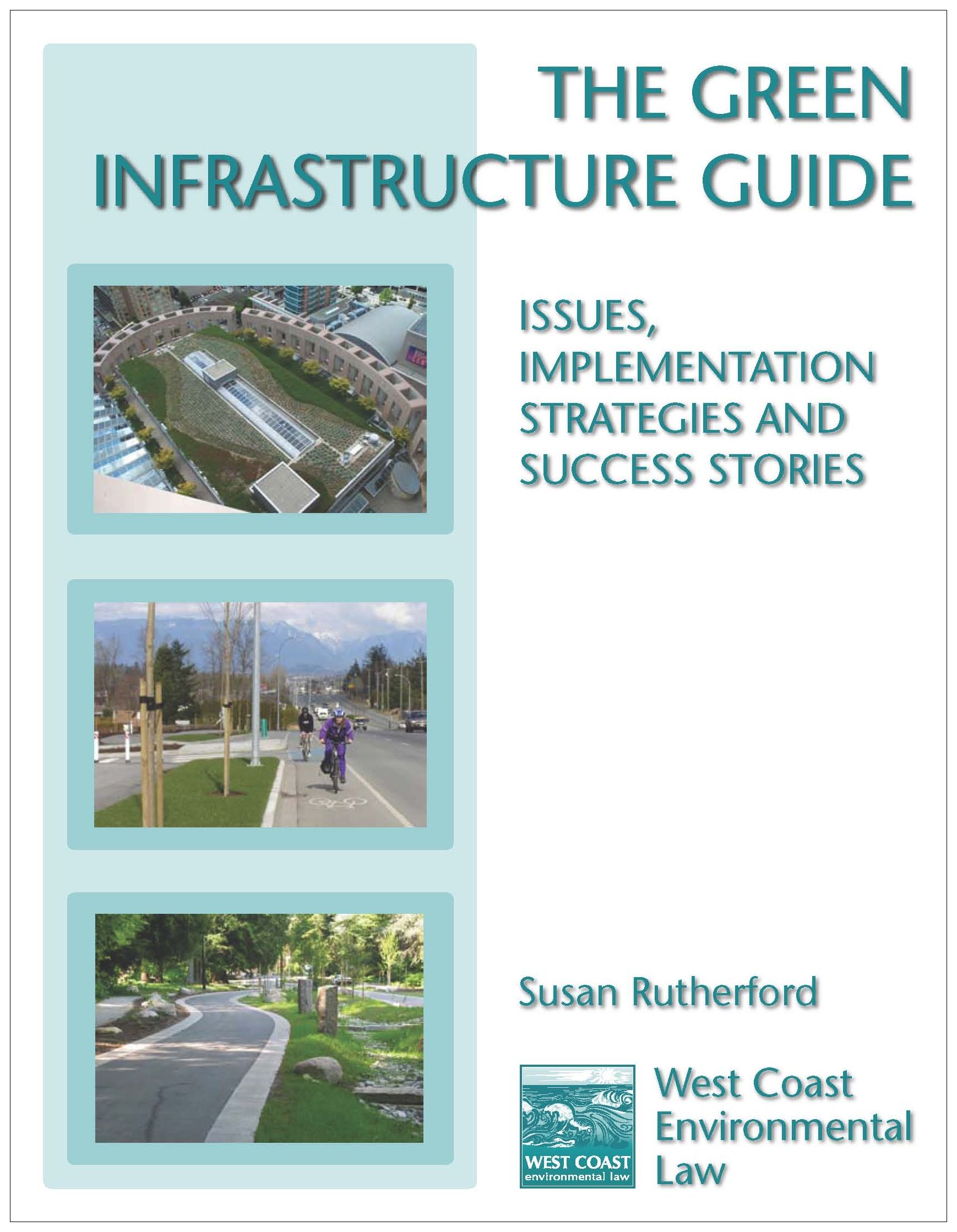The Green Infrastructure Guide: Issues, Implementation Strategies and Success Stories
Note to Reader:
Published in May 2007, The Green Infrastructure Guide is an invaluable reference document for those who embrace a ‘design with nature’ philosophy. The Guide led directly to development of the Shared Responsibility Matrix which embodies a way-of-thinking that is timeless.
The Guide illuminates the early history of green infrastructure implementation in British Columbia, serves as a frame of reference for judging progress over the past decade, and can inform current and future actions by local governments.
The vision for the Guide flowed from the 2005 Metro Vancouver Green Infrastructure Consultation Workshop, a seminal event in British Columbia’s ‘design with nature’ journey.
IMAGINE: Once we know what we want our watersheds and neighbourhoods to look like, the next step is to decide what the tools are that will get us there
A distinction exists between natural green infrastructure and engineered green infrastructure – that is, human-designed devices that mimic nature in function, or strive to reduce their impact on ecological systems and function.
The Guide – A Backdrop for Conversations
“The Green Infrastructure Guide traces some of BC’s local government experience in implementing engineered green infrastructure designs,” wrote Susan Rutherford, Guide author. At the time, she was on the steering committee of the Green Infrastructure Partnership, representing West Coast Environmental Law.
 “The Guide’s purpose is to encourage successful designs, by reporting on what the legal and policy strategies are, what some of the implementation hurdles (and solutions) have been, and how they have been effective in achieving sustainability goals.
“The Guide’s purpose is to encourage successful designs, by reporting on what the legal and policy strategies are, what some of the implementation hurdles (and solutions) have been, and how they have been effective in achieving sustainability goals.
“The intent is to support the efforts of local government officials and decision-makers to green their community’s infrastructure, by sharing tools and the collective wisdom that have been gained as a result of implementation experiences from around the province.
“The Guide is designed to serve as a useful backdrop for conversations to take place both within and beyond the local government’s planning department and legal advisors.”
The Shared Responsibility Matrix
Following release of the Green Infrastructure Guide, and over a period of three years, the Shared Responsibility Matrix decision tool evolved from a set of generic “what we would like to do” questions that were framed through the eyes of practitioners in local government.
“All of us have an impact on the land, on the water, and on the way things look. Each party in the process has a responsibility. There are solutions to be found if all parties in the development process simply talk to each other about how they could all work together more effectively, using law reform or other process changes as tools,” Susan Rutherford would explain to audiences at outreach events organized under the umbrella of the Water Sustainability Action Plan for British Columbia.
To Learn More:



